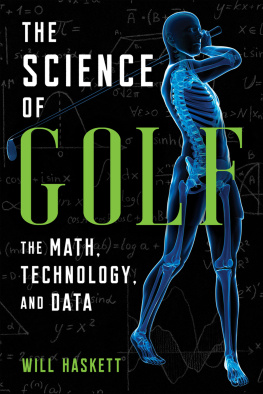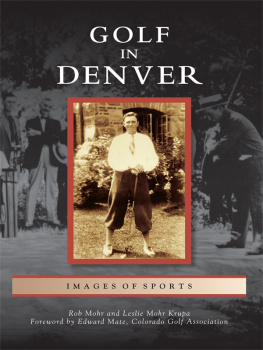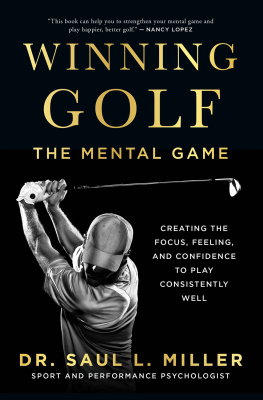Michael V. Uschan - Golf
Here you can read online Michael V. Uschan - Golf full text of the book (entire story) in english for free. Download pdf and epub, get meaning, cover and reviews about this ebook. year: 2014, publisher: Greenhaven Publishing, LLC, genre: Children. Description of the work, (preface) as well as reviews are available. Best literature library LitArk.com created for fans of good reading and offers a wide selection of genres:
Romance novel
Science fiction
Adventure
Detective
Science
History
Home and family
Prose
Art
Politics
Computer
Non-fiction
Religion
Business
Children
Humor
Choose a favorite category and find really read worthwhile books. Enjoy immersion in the world of imagination, feel the emotions of the characters or learn something new for yourself, make an fascinating discovery.
- Book:Golf
- Author:
- Publisher:Greenhaven Publishing, LLC
- Genre:
- Year:2014
- Rating:5 / 5
- Favourites:Add to favourites
- Your mark:
- 100
- 1
- 2
- 3
- 4
- 5
Golf: summary, description and annotation
We offer to read an annotation, description, summary or preface (depends on what the author of the book "Golf" wrote himself). If you haven't found the necessary information about the book — write in the comments, we will try to find it.
This diagram-loaded volume explains the history of the game of golf before delving into the science of the sport. The book explores how physics, biomechanics, psychology, and technology all play a part in how a person plays the sport. Author Michael V. Uschan concludes with training and conditioning techniques that can be used by golfers.
Golf — read online for free the complete book (whole text) full work
Below is the text of the book, divided by pages. System saving the place of the last page read, allows you to conveniently read the book "Golf" online for free, without having to search again every time where you left off. Put a bookmark, and you can go to the page where you finished reading at any time.
Font size:
Interval:
Bookmark:

Other titles in the Science Behind Sports series:
Baseball
Basketball
Car Racing
Cheerleading
Cycling
Equestrian
Figure Skating
Football
Gymnastics
Ice Hockey
Snowboarding
Soccer
Surfing
Swimming
Taekwondo
Tennis
Track and Field
Volleyball
Wrestling


2014 Gale, Cengage Learning
WCN: 01-100-101
ALL RIGHTS RESERVED. No part of this work covered by the copyright herein may be reproduced, transmitted, stored, or used in any form or by any means graphic, electronic, or mechanical, including but not limited to photocopying, recording, scanning, digitizing, taping, Web distribution, information networks, or information storage and retrieval systems, except as permitted under Section 107 or 108 of the 1976 United States Copyright Act, without the prior written permission of the publisher.
Every effort has been made to trace the owners of copyrighted material.
LIBRARY OF CONGRESS CATALOGING-IN-PUBLICATION DATA
Uschan, Michael V., 1948
Golf / by Michael V. Uschan.
pages cm. -- (Science behind sports)
Summary: Lucent Books Science Behind Sports Series explores the scientific principles behind some of the most popular team and individual sports, such as baseball, hockey, gymnastics, wrestling, swimming, and skiing. Each volume in the series focuses on one sport and opens with a brief look at the featured sports origins, history and changes to rules, equipment, or techniques. Subsequent chapters cover the biomechanics and physiology of playing, related health and medical concerns, and the causes and treatment of sports-related injuries-- Provided by publisher.
Includes bibliographical references and index.
ISBN 978-1-4205-1153-6 (hardback)
1. Golf--Juvenile literature. 2. Sports sciences--Juvenile literatures. I. Greenhaven Press Editor. II. Title.
GV965.U95 2013
796.352--dc23
2013043173
Lucent Books
27500 Drake Rd
Farmington Hills Ml 48331
ISBN-13: 978-1-4205-1153-6
ISBN-10: 1-4205-1153-X
Printed in the United States of America
1 2 3 4 5 6 7 18 17 16 15 14
TABLE OF CONTENTS
O n March 21, 1970, Slovenian ski jumper Vinko Bogataj took a terrible fall while competing at the Ski-flying World Championships in Oberstdorf, West Germany. Bogatajs pinwheeling crash was caught on tape by an ABC Wide World of Sports film crew and eventually became synonymous with the agony of defeat in competitive sporting. While many viewers were transfixed by the severity of Bogatajs accident, most were not aware of the biomechanical and environmental elements behind the skiers fallheavy snow and wind conditions that made the ramp too fast and Bogatajs inability to maintain his center of gravity and slow himself down. Bogatajs accident illustrates that, no matter how mentally and physically prepared an athlete may be, scientific principlessuch as momentum, gravity, friction, and aerodynamicsalways have an impact on performance.
Lucent Books Science Behind Sports series explores these and many more scientific principles behind some of the most popular team and individual sports, including baseball, hockey, gymnastics, wrestling, swimming, and skiing. Each volume in the series focuses on one sport or group of related sports. The volumes open with a brief look at the featured sports origins, history and changes, then move on to cover the biomechanics and physiology of playing, related health and medical concerns, and the causes and treatment of sports-related injuries.
In addition to learning about the arc behind a curve ball, the impact of centripetal force on a figure skater, or how water buoyancy helps swimmers, Science Behind Sports readers will also learn how exercise, training, warming up, and diet and nutrition directly relate to peak performance and enjoyment of the sport. Volumes may also cover why certain sports are popular, how sports function in the business world, and which hot sporting issuessports doping and cheating, for exampleare in the news.
Basic physical science concepts, such as acceleration, kinetics, torque, and velocity, are explained in an engaging and accessible manner. The full-color text is augmented by fact boxes, sidebars, photos, and detailed diagrams, charts and graphs. In addition, a subject-specific glossary, bibliography and index provide further tools for researching the sports and concepts discussed throughout Science Behind Sports.
The History of Golf
M any people consider St. Andrews Links golf course in St. Andrews, Scotland, to be the historic home of golf, because golfers have been playing there since the early 1400s. It is located on the shore of the North Sea, a site that is typical of the earliest golf courses. Centuries ago such sandy, seaside tracts of land were considered wasteland unsuitable for farming. They were used instead as open public spaces for leisure activities, such as picnicking, walking, and playing golf. Farmers also let their sheep graze on this land. By chomping on the grass and keeping it short, those hungry sheep actually made it easier for people to play golf.
In the twenty-first century, people still play golf at St. Andrews Links, but the game is nearly unrecognizable from the primitive one that golfers played in the 1400s. The first golfers played with clubs and balls made of wood. Modernday golfers play with clubs and balls that are designed on computers and manufactured with space-age materials, incorporating scientific principles that make it easier for both professional and amateur golfers to hit better shots. Golfers today can ride motorized golf carts instead of walking 5 miles (8km) or more to play eighteen holes. They can also use electronic range finders to find exact distances to hit their shots to the the green, the end point of the hole. Thanks to American George Franklin Grant, inventor of the wooden golf tee, golfers no longer place their balls on small piles of sand before hitting them. And instead of wearing heavy pants and coats made of wool, a natural fabric, golfers today don garments manufactured from synthetic fabrics that keep them comfortable in the hottest or coldest weather and dry in the heaviest downpours.
Another significant change is the popularity of the game. Today golf is extremely popular around the world. Many people find it a fascinating, often addictive game. American Arnold Palmer, one of the greatest players in the history of professional golf, explains why millions of people love golf even though it is a very difficult game to play: Golf is deceptively simple and endlessly complicated. A child can play it well and a grown man can never master it. [It] is almost a science, yet it is a puzzle without an answer. [It] satisfies the soul and frustrates the intellect. It is at the same time rewarding and maddeningand it is without doubt the greatest game mankind has ever invented.
The Origin of Golf
No one knows who actually invented golf or when. One theory is that Scottish shepherds were the first golfers. Bored with watching their wooly charges graze along seaside stands of tall grass, the shepherds began striking small rocks with the curved part of the wooden staffs they used to herd their sheep. When a rock accidentally fell into a hole, they tried to repeat that success, and golf was born.
Next pageFont size:
Interval:
Bookmark:
Similar books «Golf»
Look at similar books to Golf. We have selected literature similar in name and meaning in the hope of providing readers with more options to find new, interesting, not yet read works.
Discussion, reviews of the book Golf and just readers' own opinions. Leave your comments, write what you think about the work, its meaning or the main characters. Specify what exactly you liked and what you didn't like, and why you think so.











